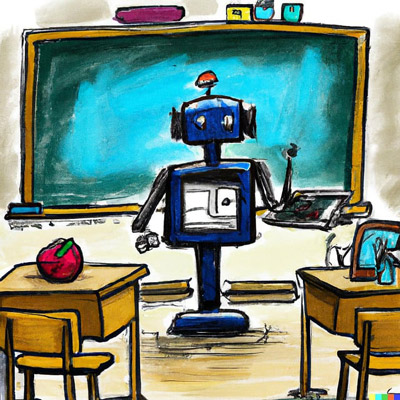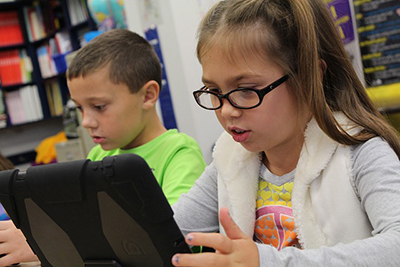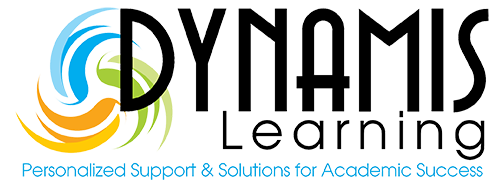 What are some of the myths around artificial intelligence? How can I support my child in their education in the midst of an increasing technology presence in the classroom?
What are some of the myths around artificial intelligence? How can I support my child in their education in the midst of an increasing technology presence in the classroom?
Inspired by West Virginia elementary teacher Rebecca Recco’s article, “Five Myths About Classroom Technology (And What To Do, Instead),” this blog post features an artificial intelligence (AI) “spin” on technology in the classroom, diving deeper into the recent phenomenon affecting students at all levels of education.
Myth #1: “Artificial Intelligence Fixes All of Your Student’s Problems.”
Just as technology is referred to as a “tool,” we can also consider artificial intelligence as a “tool.” According to Merriam-Webster, a tool is defined as “something (such as an instrument or apparatus) used in performing an operation or necessary in the practice of a vocation or profession.” Over the course of a child’s education, they develop their own unique, educational tool belt – a collection of literal materials and resources and figurative concepts and skills – to support them in their educational journey towards their chosen “vocation or profession.”
 If AI technology is simply another tool in the educational tool belt, then artificial intelligence cannot and should not operate independently of the wearer of the tool belt – in this case, the student. As the tool belt wearer, with the support of parents and teachers, the student must discern whether AI technology is the appropriate tool for a given educational scenario.
If AI technology is simply another tool in the educational tool belt, then artificial intelligence cannot and should not operate independently of the wearer of the tool belt – in this case, the student. As the tool belt wearer, with the support of parents and teachers, the student must discern whether AI technology is the appropriate tool for a given educational scenario.
Questions for Students (and Parents) to Consider:
- Is artificial intelligence an appropriate tool for this educational task?
- Is using artificial intelligence for this educational task helping or hindering my learning?
 Myth #2: “Artificial Intelligence Leads to Student Success.”
Myth #2: “Artificial Intelligence Leads to Student Success.”
Student success in the classroom is measured in a variety of ways – from quantitative data like report cards and test scores to qualitative developments like creativity and critical thinking. It is not AI technology in and of itself that leads to student success, but rather, it is how students use AI technology in their learning that ultimately determines their success.
Artificial intelligence poses problems for students (and teachers) when they use it as a replacement for their learning and even their own work. You might be familiar with a both popular and controversial new software known as ChatGPT (Generative Pre-trained Transformer). ChatGPT is considered an artificial intelligence chatbot, meaning that anyone can type in a question or statement, and within seconds, receive a “human-like” response. For example, at the touch of a button, ChatGPT can provide a response to almost any question and even compose an email, an outline, or an entire essay.
In some cases, students are using these artificial intelligence capabilities to replace their own intelligence – using ChatGPT to complete their assignments for them – inhibiting their own growth and development in the classroom. Fortunately for teachers, new technology created in the wake of ChatGPT, such as ZeroGPT, can easily check student work for evidence of AI usage, reinforcing the question, is my students’ work “human?”
Questions for Students (and Parents) to Consider:
- Am I using artificial intelligence to support my learning or to complete my work for me?
- How is using artificial intelligence impacting my success as a student – both positively and negatively?
 Myth #3: “Artificial Intelligence is Less Meaningful Than Traditional Learning.”
Myth #3: “Artificial Intelligence is Less Meaningful Than Traditional Learning.”
Though it can be tempting to contrast “traditional” education with “technology-based” learning, the term “traditional” has undoubtedly transformed over the years to incorporate technology in the classroom – whether by choice or necessity. As with any technology tool – especially AI technology – it is not the tool itself that creates meaning. It is the student, aided by the teacher, that creates meaning – bridging together their previous knowledge with their newfound knowledge – supported by the various tools in their educational tool belt.
The moment when technology, specifically artificial intelligence, becomes the “meaning maker” is the moment that learning ceases to be meaningful. Truly, AI technology has the potential to positively support learners of all abilities and walks of life, but one must be wary when the “artificial” takes the place of the “human.”
Questions for Students (and Parents) to Consider:
- Is my learning meaningful, or am I using artificial intelligence to create meaning for me?
- How can I use artificial intelligence as a tool for my learning rather than as the source of my learning?
 Stay tuned for our final blog post in this series regarding pros and cons of AI technology, including further details about resources, like ChatGPT, that your child or student may be using in the classroom.
Stay tuned for our final blog post in this series regarding pros and cons of AI technology, including further details about resources, like ChatGPT, that your child or student may be using in the classroom.
We, at Dynamis Learning, believe in helping parents support their children in their education, especially in a twenty-first century world that is constantly evolving with new technology tools. We work in collaboration with your child’s teacher and school to find out what the teacher sees in the classroom versus what the parent sees at home.
Contact owner, Helen Panos at info@dynamislearningacademy.com or at 770-282-9931 to schedule a free consultation about K-12 tutoring, test taking tips, SAT/ACT Prep, online writing workshops, advocacy, academic planning, or any other area of concern.

What are some of the myths around artificial intelligence? How can I support my child in their education in the midst of an increasing technology presence in the classroom?
Inspired by West Virginia elementary teacher Rebecca Recco’s article, “Five Myths About Classroom Technology (And What To Do, Instead),” this blog post features an artificial intelligence (AI) “spin” on technology in the classroom, diving deeper into the recent phenomenon affecting students at all levels of education.
Myth #1: “Artificial Intelligence Fixes All of Your Student’s Problems.”
Just as technology is referred to as a “tool,” we can also consider artificial intelligence as a “tool.” According to Merriam-Webster, a tool is defined as “something (such as an instrument or apparatus) used in performing an operation or necessary in the practice of a vocation or profession.” Over the course of a child’s education, they develop their own unique, educational tool belt – a collection of literal materials and resources and figurative concepts and skills – to support them in their educational journey towards their chosen “vocation or profession.”

If AI technology is simply another tool in the educational tool belt, then artificial intelligence cannot and should not operate independently of the wearer of the tool belt – in this case, the student. As the tool belt wearer, with the support of parents and teachers, the student must discern whether AI technology is the appropriate tool for a given educational scenario.
Questions for Students (and Parents) to Consider:
- Is artificial intelligence an appropriate tool for this educational task?
- Is using artificial intelligence for this educational task helping or hindering my learning?

Myth #2: “Artificial Intelligence Leads to Student Success.”
Student success in the classroom is measured in a variety of ways – from quantitative data like report cards and test scores to qualitative developments like creativity and critical thinking. It is not AI technology in and of itself that leads to student success, but rather, it is how students use AI technology in their learning that ultimately determines their success.
Artificial intelligence poses problems for students (and teachers) when they use it as a replacement for their learning and even their own work. You might be familiar with a both popular and controversial new software known as ChatGPT (Generative Pre-trained Transformer). ChatGPT is considered an artificial intelligence chatbot, meaning that anyone can type in a question or statement, and within seconds, receive a “human-like” response. For example, at the touch of a button, ChatGPT can provide a response to almost any question and even compose an email, an outline, or an entire essay.
In some cases, students are using these artificial intelligence capabilities to replace their own intelligence – using ChatGPT to complete their assignments for them – inhibiting their own growth and development in the classroom. Fortunately for teachers, new technology created in the wake of ChatGPT, such as ZeroGPT, can easily check student work for evidence of AI usage, reinforcing the question, is my students’ work “human?”
Questions for Students (and Parents) to Consider:
- Am I using artificial intelligence to support my learning or to complete my work for me?
- How is using artificial intelligence impacting my success as a student – both positively and negatively?

Myth #3: “Artificial Intelligence is Less Meaningful Than Traditional Learning.”
Though it can be tempting to contrast “traditional” education with “technology-based” learning, the term “traditional” has undoubtedly transformed over the years to incorporate technology in the classroom – whether by choice or necessity. As with any technology tool – especially AI technology – it is not the tool itself that creates meaning. It is the student, aided by the teacher, that creates meaning – bridging together their previous knowledge with their newfound knowledge – supported by the various tools in their educational tool belt.
The moment when technology, specifically artificial intelligence, becomes the “meaning maker” is the moment that learning ceases to be meaningful. Truly, AI technology has the potential to positively support learners of all abilities and walks of life, but one must be wary when the “artificial” takes the place of the “human.”
Questions for Students (and Parents) to Consider:
- Is my learning meaningful, or am I using artificial intelligence to create meaning for me?
- How can I use artificial intelligence as a tool for my learning rather than as the source of my learning?

Stay tuned for our final blog post in this series regarding pros and cons of AI technology, including further details about resources, like ChatGPT, that your child or student may be using in the classroom.
We, at Dynamis Learning, believe in helping parents support their children in their education, especially in a twenty-first century world that is constantly evolving with new technology tools. We work in collaboration with your child’s teacher and school to find out what the teacher sees in the classroom versus what the parent sees at home.
Contact owner, Helen Panos at info@dynamislearningacademy.com or at 770-282-9931 to schedule a free consultation about K-12 tutoring, test taking tips, SAT/ACT Prep, online writing workshops, advocacy, academic planning, or any other area of concern.
